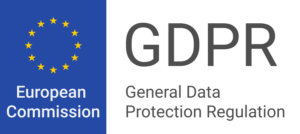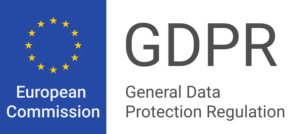Hello everyone – and a special thanks to those who attended our most recent event, where we explored inclusivity and identity truth in Fintech with a wonderful community of category influencers.
It was a truly inspiring evening, where fascinating ideas and experiences were shared by senior female leaders (and a few men too!) in the industry, reminding us all of the importance of diverse opinions on key topics like this one.
For those who couldn’t make it, here’s a little taste of the key, stand-out insights we uncovered, over a variety of exquisite wines from the UK and Spain!
Earlier this week, we hosted some wonderful financial services professionals for an evening of wine tasting and engaging conversations, all centred around the topic of inclusion and identity in our industry.
— 11:FS (@11FS) June 29, 2023
Sabrina Gross from Veridas explains more 👇 pic.twitter.com/Ub7LqUAO8Z
This week we partnered with Veridas for an exclusive Open Mic Night event, bringing together a diverse panel to discuss how to make financial services more inclusive.
— 11:FS (@11FS) June 30, 2023
Customer Strategy Director @K8Moody shares her thoughts on the progress made so far 👇 pic.twitter.com/gzt8HbMP9n
Key insight 1: Holistic user improvement
While technology and digital disruption is net positive, not everything can be laid at technologies door. We still have to build better customer experiences at all touchpoints. Identity verification solutions play a significant role in achieving holistic user improvement by offering seamless and secure verification processes. Businesses should prioritize user experience when implementing such solutions, as it directly impacts customer trust, satisfaction, and overall interactions.
Key insight 2: No more generic customer profiles
Many product teams today are still focused on building products that cater to a generic customer profile. However, it is no longer viable to develop solutions that target only one type of customer. To truly improve products, there needs to be a greater emphasis on product research and understanding diverse customer segments.
Without diversity within the product team itself, the product’s potential for improvement is limited. Different perspectives and insights from team members with varied backgrounds and experiences are crucial for creating innovative and customer-centric solutions. This collaborative approach enables product teams to adapt and offer customised experiences, similar to the successful strategies employed by brands like Uber and Airbnb.
By building products tailored to specific customer profiles, financial services providers can deliver better outcomes and meet the unique needs of individual customers. Customization allows for personalised experiences, enhancing customer satisfaction and loyalty. It’s important for product teams to embrace this approach and invest in the necessary research and resources to create products that truly cater to diverse customer segments.
Through the utilisation of an identity verification platform, businesses can benefit from customisable verification processes that align with specific customer profiles. This empowers them to enhance security and compliance while delivering tailored experiences that cater to the unique needs of their customers.
Key insight 3: A focus on empathy for mature audiences
Too many tech products focus solely on the tech-savvy, inadvertently excluding individuals who may not be as comfortable with cutting-edge technology. However, it is important to bridge the physical and digital gap, as more mature audiences often prefer the guidance and human interaction they receive in a branch setting. This approach can effectively break down barriers and foster trust. Interestingly, this audience represents a larger and more valuable market segment, given their financial capabilities.
By embracing a “phygital” approach that combines the best of both physical and digital experiences, businesses can cater to the needs of all customer demographics, including the tech-savvy and those seeking personalised guidance. Voice biometrics, for instance, provide a great example of super-advanced technology on the back end to verify an individual’s voice, while the front end can be as simple as making a regular phone call for the user.
Adapting technology in this way can improve engagement across elder segments of the client base and transform the way society perceives these changes, which are often considered too fast or risky for those who may face difficulties in adapting.
Key insight 4: Make access invisible
How much is too much when dealing with identity services? We are bombarded by repeated onboarding; everything we do requires us to give away information. The perfect solution will reduce this requirement by being interoperable and accepted everywhere. Expectations are high in terms of speed and ease, so processes should become more invisible to the customer.
In this sense, biometrics hold the key to making these identity verification processes smooth while upgrading security overall.
Key insight 5: Loyalty is no longer a given
We need to gain a better understanding of what hurdles we create in designing the service: are we combining the way the experience should function versus the one the customers want? Making changes like these is a big deal to most banks, so it’s important to agree on how far we need to look into the future to include social elements like identity, gender diversity, and more.
Because it’s so easy for customers to switch, we must accept that loyalty can no longer be expected.
Key insight 6: Banks must outsmart criminals
There is an intricate and symbiotic balancing act between friction and risk. Fraud is an ongoing focus and should be part of the building strategy and future development of the product. Criminals can innovate faster than most banks so we should use the tools they do, embrace a collective understanding of tactics and expose them earlier.
Effective and secure utilization of AI is undoubtedly necessary to combat malicious uses of this technology, such as deepfakes. That is why banks and financial institutions should embrace these new technologies with vendors who can keep pace with fraudsters.
Key insight 7: Never forget the human element
People are biased towards filters they don’t like – specifically the ones they see and must use when they onboard. The identity process makes people look ugly (and thus uncomfortable) because of the lack of filters they are so used to using.
But from a broader perspective, biometric processes should begin to be understood as a right for users. Exercising their identity securely, privately, and easily should always be an option, eliminating outdated password or SMS systems. The human component of biometrics is that it allows us to identify ourselves based on who we are, not what we know or possess, which can easily be known or used by someone else. Enabling these types of identification processes allows users to be themselves without friction.
I hope you’ve enjoyed this peek inside the evening’s discussion and look forward to seeing you at our next event for more thought-provoking conversation.
Cheers, Sabrina.






















